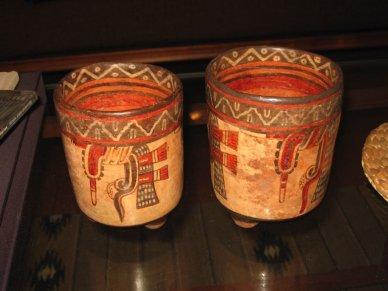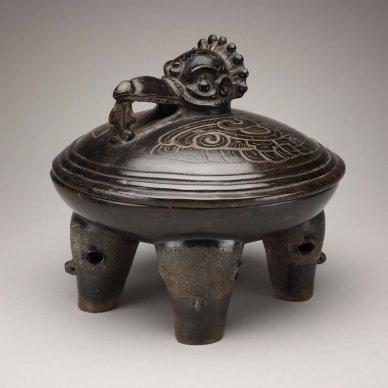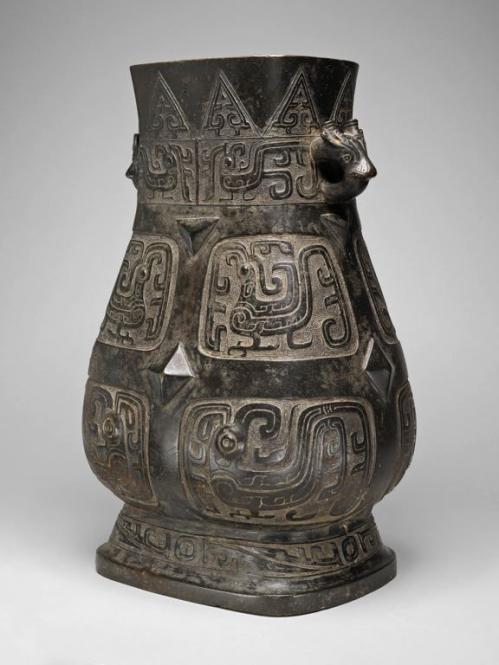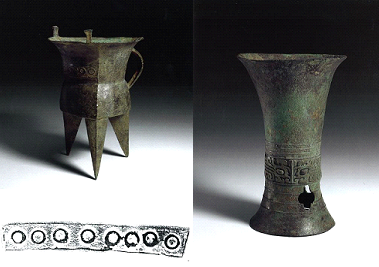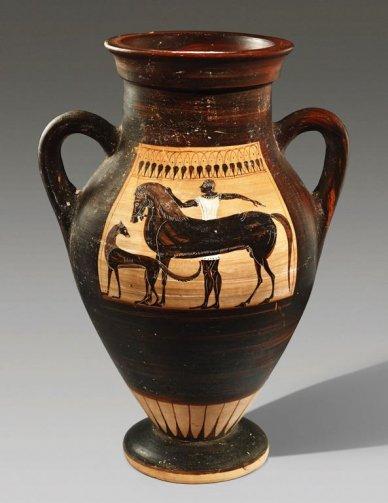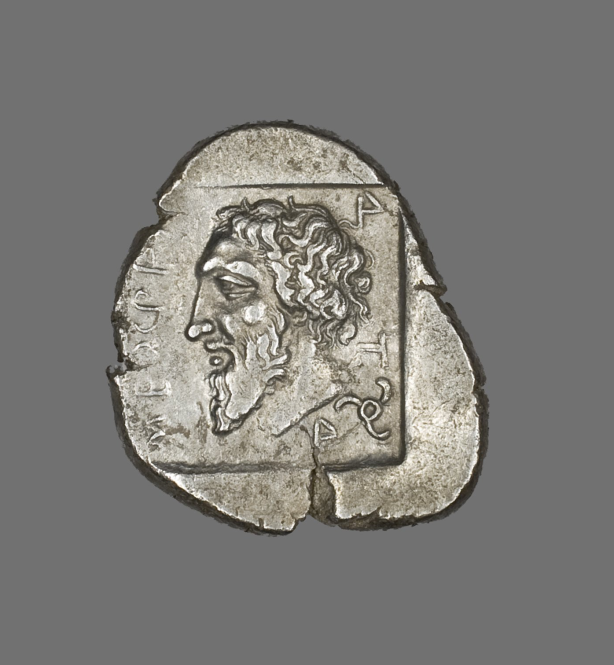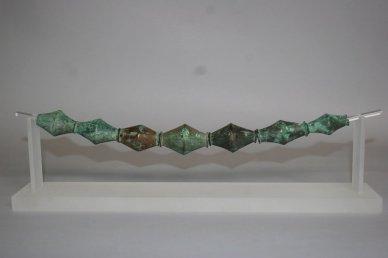2012.687
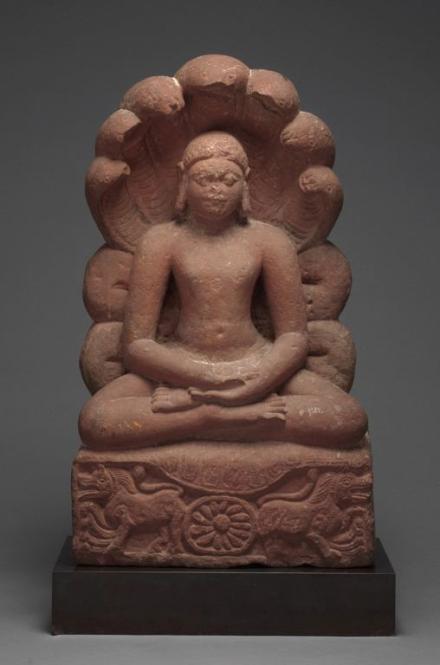
Object Title
Jaina Tirthankara Parshvanatha with Serpent Hood
Measurements
74.8 x 44.0 x 21.0 cm (29 1/2 x 17 3/8 x 8 1/4 in)
Creation Date
6th century
Credit Line
Gift of Marilynn Alsdorf
Museum Name
Culture
Country of Origin
Object Type
Materials / Techniques
Object URL
Currently not published online
Provenance Information
Purchased by Mr. James W. Alsdorf, Chicago, Illinois, U.S.A., from Spink & Son, Ltd., London, England, in 1976. Attempts to determine when and from whom Spink & Son, Ltd., acquired the object were unsuccessful. Mrs. James W. Alsdorf publicly promised the work to the Art Institute of Chicago in 1997, signed a promised gift agreement for the work in 2002, and gave the work to the Art Institute in 2012.
Exhibition Information
“The Ideal Image” – Asia House Gallery, New York, New York (November 1978 – December 3, 1978); The Art Institute of Chicago, Chicago, Illinois (March 24 – May 6, 1979).
"A Collecting Odyssey: Indian, Himalayan, and Southeast Asian Art from the James and Marilynn Alsdorf Collection" – The Art Institute of Chicago, Chicago, Illinois (August 2 – October 26, 1997).
“Realm of the Gods” – Memphis Brooks Museum, Memphis, Tennessee (April 30 – July 23, 2000).
The object has been on display at the Art Institute of Chicago, Chicago, Illinois, in the Alsdorf Galleries of Indian, Southeast Asian, Himalayan and Islamic Art from December 2008 to the present.
"A Collecting Odyssey: Indian, Himalayan, and Southeast Asian Art from the James and Marilynn Alsdorf Collection" – The Art Institute of Chicago, Chicago, Illinois (August 2 – October 26, 1997).
“Realm of the Gods” – Memphis Brooks Museum, Memphis, Tennessee (April 30 – July 23, 2000).
The object has been on display at the Art Institute of Chicago, Chicago, Illinois, in the Alsdorf Galleries of Indian, Southeast Asian, Himalayan and Islamic Art from December 2008 to the present.
Publication Information
Pratapaditya Pal, The Ideal Image (The Asia Society, New York, New York, 1978), p. 112, plate 64.
Jerome M. Eisenberg, “Indian and South-East Asian art from the Alsdorf collection,” in Minerva, vol. 8, no. 5, (Great Britain, September/October 1997), pp. 15-18.
Pratapaditya Pal with contributions by Stephen Little, A Collecting Odyssey: Indian, Himalayan, and Southeast Asian Art (The Art Institute of Chicago in association with Thames and Hudson, New York, New York, 1997), p. 320: 215, plate p. 165.
Jerome M. Eisenberg, “Indian and South-East Asian art from the Alsdorf collection,” in Minerva, vol. 8, no. 5, (Great Britain, September/October 1997), pp. 15-18.
Pratapaditya Pal with contributions by Stephen Little, A Collecting Odyssey: Indian, Himalayan, and Southeast Asian Art (The Art Institute of Chicago in association with Thames and Hudson, New York, New York, 1997), p. 320: 215, plate p. 165.
Section of the AAMD Guidelines relied upon for the exception to 1970
Cumulative facts and circumstances
Explain why the object fits the exception set forth above
This acquisition falls within two exceptions.
First, the cumulative facts and circumstances known to the Art Institute of Chicago at the time of the acquisition allowed it to make an informed judgment to acquire the object. This object has provenance established to at least 1976 when it was acquired by Mr. Alsdorf from Spink & Son, Ltd. Attempts to determine when and from whom Spink & Son, Ltd., acquired the object were unsuccessful. The sculpture has been in several exhibitions, including a 1978-79 exhibition in New York and Chicago, and it has been published three times, including in two major catalogues of South Asian art: The Ideal Image (1978) and A Collecting Odyssey: Indian, Himalayan, and Southeast Asian Art (1997). In addition, the acquisition furthers the representation of the artistic achievements of all civilizations in art museums because the seated Parshvanath is an important addition to the museum’s collection of early Jain art as well as the art of the Gupta period which was otherwise poorly represented in the museum’s collection.
Second, the acquisition of the object was by gift and the object was promised to the Art Institute prior to 2008. Mrs. Alsdorf publicly promised the work to the Art Institute of Chicago in 1997 and thereafter signed a promised gift agreement for the work in 2002.
First, the cumulative facts and circumstances known to the Art Institute of Chicago at the time of the acquisition allowed it to make an informed judgment to acquire the object. This object has provenance established to at least 1976 when it was acquired by Mr. Alsdorf from Spink & Son, Ltd. Attempts to determine when and from whom Spink & Son, Ltd., acquired the object were unsuccessful. The sculpture has been in several exhibitions, including a 1978-79 exhibition in New York and Chicago, and it has been published three times, including in two major catalogues of South Asian art: The Ideal Image (1978) and A Collecting Odyssey: Indian, Himalayan, and Southeast Asian Art (1997). In addition, the acquisition furthers the representation of the artistic achievements of all civilizations in art museums because the seated Parshvanath is an important addition to the museum’s collection of early Jain art as well as the art of the Gupta period which was otherwise poorly represented in the museum’s collection.
Second, the acquisition of the object was by gift and the object was promised to the Art Institute prior to 2008. Mrs. Alsdorf publicly promised the work to the Art Institute of Chicago in 1997 and thereafter signed a promised gift agreement for the work in 2002.
